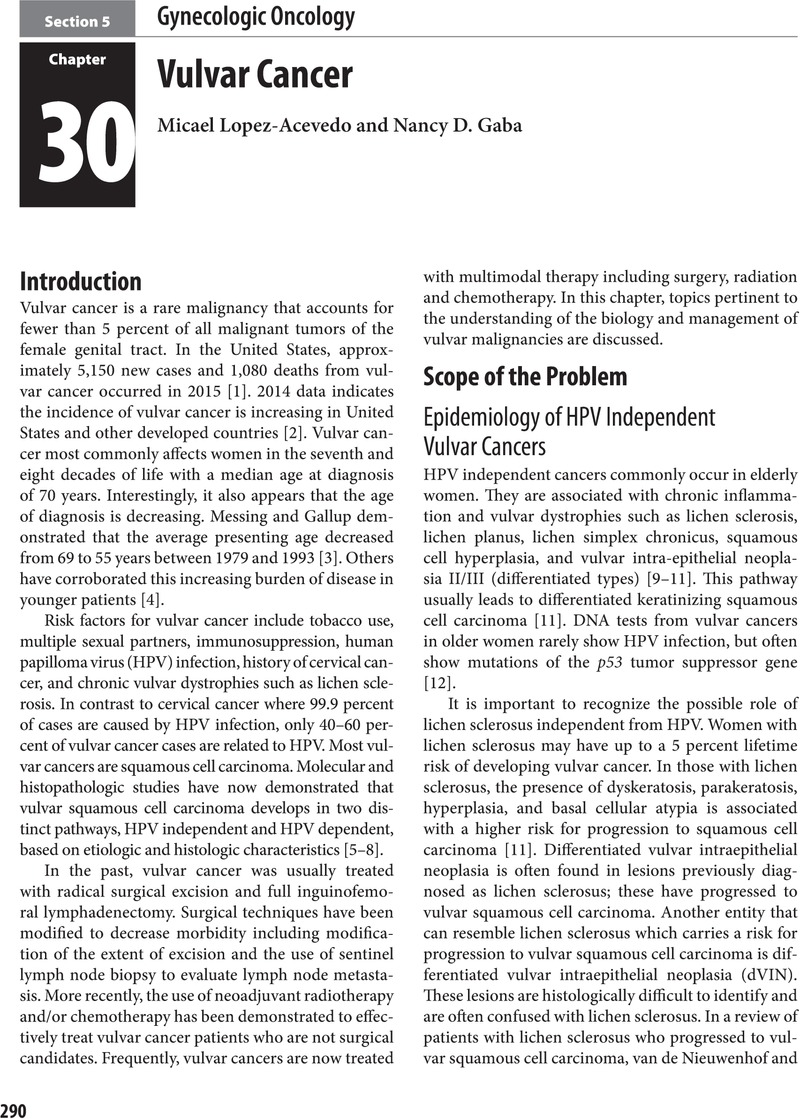Book contents
- Gynecologic Care
- Gynecologic Care
- Copyright page
- Dedication
- Contents
- Contributors
- Preface
- Section 1 Basic Gynecologic Care Issues
- Section 2 Gynecologic Surgery
- Section 3 Infertility
- Section 4 Urogynecology and Pelvic Floor Dysfunction
- Section 5 Gynecologic Oncology
- 27 Chemotherapy
- 28 Radiation Oncology
- 29 Cervical Cancer
- 30 Vulvar Cancer
- 31 Vaginal Cancer
- 32 Endometrial Cancer
- 33 Uterine Sarcoma
- 34 Epithelial Ovarian, Fallopian Tube, and Primary Peritoneal Cancer
- 35 Ovarian Sex Cord-Stromal Tumors
- 36 Ovarian Germ Cell Tumors
- 37 Gestational Trophoblastic Disease
- Section 6 General Considerations
- Index
- References
30 - Vulvar Cancer
from Section 5 - Gynecologic Oncology
Published online by Cambridge University Press: 01 February 2018
- Gynecologic Care
- Gynecologic Care
- Copyright page
- Dedication
- Contents
- Contributors
- Preface
- Section 1 Basic Gynecologic Care Issues
- Section 2 Gynecologic Surgery
- Section 3 Infertility
- Section 4 Urogynecology and Pelvic Floor Dysfunction
- Section 5 Gynecologic Oncology
- 27 Chemotherapy
- 28 Radiation Oncology
- 29 Cervical Cancer
- 30 Vulvar Cancer
- 31 Vaginal Cancer
- 32 Endometrial Cancer
- 33 Uterine Sarcoma
- 34 Epithelial Ovarian, Fallopian Tube, and Primary Peritoneal Cancer
- 35 Ovarian Sex Cord-Stromal Tumors
- 36 Ovarian Germ Cell Tumors
- 37 Gestational Trophoblastic Disease
- Section 6 General Considerations
- Index
- References
Summary

- Type
- Chapter
- Information
- Gynecologic Care , pp. 290 - 300Publisher: Cambridge University PressPrint publication year: 2018

